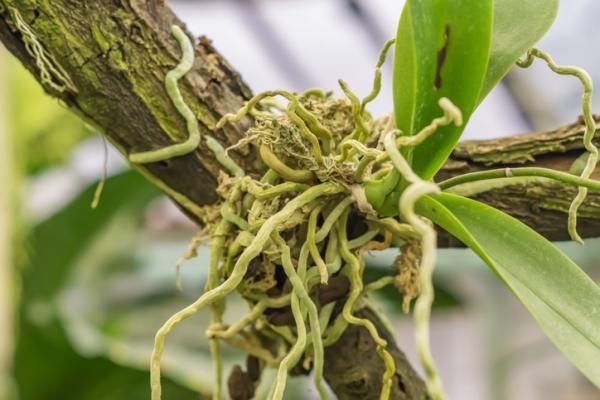If you’ve grown tomato plants, you may have noticed odd bumps or growths forming on the stems. These protrusions are actually aerial roots that form as part of the tomato plant’s normal development.
Below we’ll explore what aerial roots are, why tomatoes produce them, and what to do about these strange stem growths.
What Are Aerial Roots?
Aerial roots, also known as adventitious roots, are roots that form along places other than a plant’s primary root system, such as stems, leaves, or shoots.
They emerge as protrusions or growths above the soil line often looking like small whitish bumps along tomato stems. Aerial roots act as a backup root system that can absorb moisture and nutrients.
In nature, aerial roots allow vines and climbing plants to gather additional support by attaching to surfaces as they grow.
Why Do Tomato Plants Grow Them?
Tomato plants, especially heirloom varieties, frequently produce aerial roots. Here are reasons tomatoes develop these aerial roots:
-
It’s a survival mechanism – If tomato vines become damaged or contact the ground, aerial roots allow the plant to reroot itself and continue growing.
-
High humidity triggers more aerial root growth. The extra moisture stimulates their formation
-
As a vine plant, tomatoes inherit the tendency to produce aerial roots from their wild ancestors in the tropics. It’s an ancestral, inherent trait.
-
Some varieties are genetically more prone to generating aerial roots than others.
-
Stress from improper watering, disease, or inadequate nutrients can worsen aerial root production.
Are Aerial Roots Harmful?
Aerial roots are completely normal and do not harm tomato plants. Think of them as bonus roots. They will not damage or infect your plant.
As long as the tomato plant is otherwise healthy, aerial roots are simply an oddity that can be ignored. They are not a sign of problems.
What to Do About Aerial Tomato Roots
Since aerial roots are harmless, there is no need to remove them or take any action. But here are a few options if desired:
-
Carefully prune off aerial roots to improve plant appearance. Avoid damaging stems.
-
Bury lower aerial roots in soil to help them develop into functioning roots.
-
Take cuttings from aerial root sections to propagate new tomato plants.
-
Avoid overwatering and fertilize properly to reduce excessive aerial root growth.
Aerial Roots Are Not Cause for Concern
Some gardeners worry tomato aerial roots indicate disease or are a sign of trouble. But in fact, they are a natural part of tomato plant development.
So if you notice these strange protrusions on your tomato plant stems, there is no need for alarm or any drastic measures. Simply accept them as part of growing heirloom tomato varieties, and enjoy the harvest!
Rescuing Tomato Plants: Aerial Roots & Root Rot Recovery | Part 1
FAQ
Why does my tomato plant have aerial roots?
Why is my plant growing so many aerial roots?
Should I cut my plants aerial roots?
What does a stressed tomato plant look like?
- A Complete Guide to Caring for Yuki Cherry Blossom Shrub - January 23, 2025
- Identifying Red Hot Poker Seeds: What to Look For When Harvesting Torch Lily Pods - January 23, 2025
- A Complete Guide to Harvesting Evening Primrose Seeds - January 23, 2025

